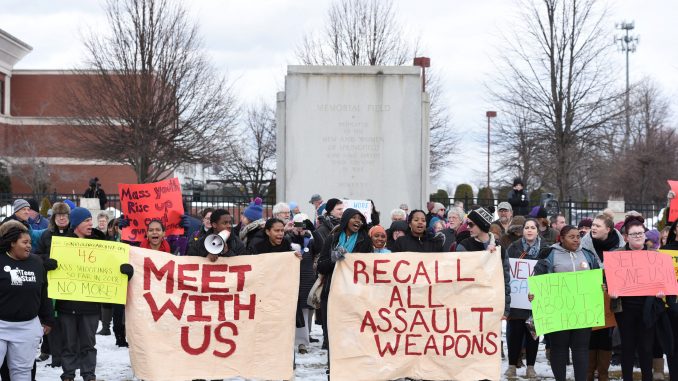
ALBEMARLE — A pair of local candidates for school board took to Facebook to discuss reports that Stanly County students were not allowed to participate in a national walkout movement in support of new gun controls. John Edwards and Anthony Graves, who are both running for Stanly County School Board, pointed out that the county’s student code of conduct prevents walkouts in a Facebook video.
The candidates took to social media as television reports indicated that Stanly County Schools had prevented students from participating in the #ENOUGH National School Walkout. Charlotte television station WSOC reported earlier that

“You can’t just let 800 kids walkout,” said John Edwards, candidate for Stanly County School Board, on Facebook.
Graves also stated that the county’s principles met last week and discussed how the county’s schools would participate in the national discussion about gun violence. According the Graves, the school system decided to use their normal monthly lockdown drill as a way to stay within the system’s prohibition of walkouts while providing a way to remember the fallen students at Parkland.
New Stanly County Schools Superintendent Jeff James has publicly stated that the school system will provide a detailed released on Friday about today’s events. In the meantime, James said there was “no intent to stop students from being heard.”
The Stanly County Schools Code of Student Conduct reads:
No student shall use passive resistance, noise, threat, fear, intimidation, coercion, force, violence, or any other form of conduct to intentionally cause the disruption of any lawful function of the school to which he is assigned or any other school in the school system.
No student shall participate in any boycott of any lawful school function or participate in any sit-in or any walkout at any school to which he is assigned or any other school in the school system.
No student shall engage in any protest, march, or similar activities on school premises which cause or result in the disruption of any lawful function of the school to which he is assigned or any other school in the school system.
The #ENOUGH National School Walkout was intended to pressure federal and state lawmakers to tighten laws on gun ownership. With some students dressed in orange, the color adopted by the gun control movement, the walkouts began at 10 a.m. local time in each time zone and were scheduled to last 17 minutes. Many rallies went longer.
The duration was a tribute to 17 students and staff killed at Marjory Stoneman Douglas High School in Parkland, Fla., on Feb. 14.
While some school districts gave their blessings to the walkouts, others said anyone who participated would face discipline. According to social media posts, Stanly County’s schools extended a monthly lockdown drill that lasted 17 minutes.
“I didn’t see any problem with the lockdown itself,” said Ray Quick in an interview with Charlotte television station WSOC. “The school has the right to do it,” added Quick, the former mayor of Red Cross.
Many characterized the walkout as an exercise of student free speech. The Supreme Court of the United States has long held that students do not “shed their constitutional rights to freedom of speech or expression at the schoolhouse gate.” However, disruption of the educational day is one area that the high court has repeatedly said could be grounds for limitations on students’ broad rights.
The National Coalition Against Censorship, which advocates for first amendment rights, created a guide to student protests which it promotes on its web site. The guide states that organizing protests during school hours or that disrupt the school day are “risky” which the guide says means “your school is allowed to punish you for it.” The guide offers that permitted demonstrations include protests during non-instructional time. The guide concludes with the warning: “A disruptive walkout can be punished.”
There has been no indication that students received any punishment for participating in the movement or expressing support for the walkout. Candidate Graves also asserted that no students or faculty had asked to participate in a walkout.
This article has been updated. Additional reporting by Reuters.


